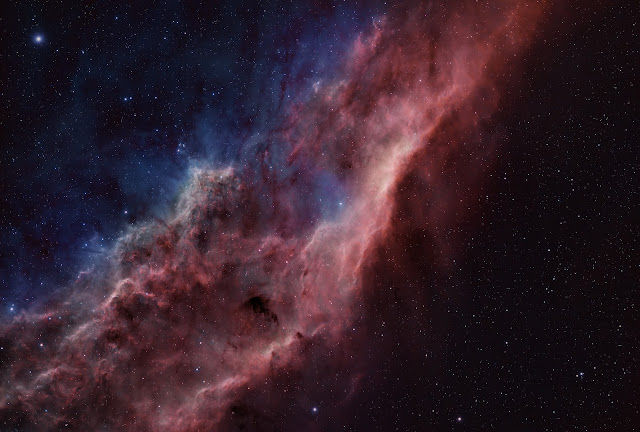I am fascinated by the latest Hubble palette processing for OSC cameras. I thought I would have a go with the Heart & Soul nebulas in Cassiopeia. There are more and more videos on You Tube. Both images are a little over 4 hours of exposure time captured with the Optolong L-enhance filter. This is solely my creative interpretation of that style as I have not figured out yet how to extract the Ha & Oiii from the master and recombine. Every time I have tried it in APP I only get a black & white image despite what the You Tube videos show, something I am doing wrong somewhere..
Saturday 19 September 2020
Heart & Soul Nebula Nebula
Friday 18 September 2020
Andromeda Globular clusters.
I stumbled across a great website by Steve Gottlieb https://www.astronomy-mall.com/Adventures.In.Deep.Space/gcextra.htm who has spend some time studying the globular clusters of M31. Several hundred were found categorised and published first by Edwin Hubble in 1932, As many as 509 globulars in M31 have been catalogued based on spectra plates taken at Mauna Kea with the 3.6 meter Canada-France-Hawaii telescope, (Crampton et al, 1985), although recent work indicates that some of these are faint background galaxies. In any case, the M31 globular cluster system does appear to be more numerous than our own galaxy by roughly a 2:1 ratio. This important article provides identifications, positions, magnitudes, colours and radii although no finder charts are given.
A few nights ago I was testing the ASIAIR Pro auto focus and aligned on The Andromeda Galaxy. An hour later I stacked an hours worth of data and stretched it. I was truly amazed I was able to resolve 2' clusters @>mag15. Resolving deeper & longer is a passion of mine and my project a few years ago labelled hundreds of PGC galaxies in the Coma Cluster, this intrigued me from the outset and I had to see how many I could find in M110 (NGC205)
It didn't take long to find them all.
My image is on the left. incredible detail for just 1 hour of exposure. Spectacular rounds stars with of .42 arc second guiding accuracy.
My next project during the new lockdown will be to catalogue the Globulars in M31. I have found quite a few already but it looks like it may take a while.
Monday 14 September 2020
M33
Some people like dairy milk, some like a Wispa me I love a good Galaxy. How about this one. About 2.8 billion light years away. M33 the Triangulum galaxy is part of the local group. I am sure there is another Astro Geek on a planet surrounding one of it's 40 billion stars looking over the galactic fence at us here. A very diffuse object I can't say I have seen it naked eye, others claim too but a wonderful sight in binoculars and a wide field eyepiece. Five hours worth of data for this one.
Image 1 is calibrated in Deep sky stacker and processed in Photoshop.
What an incredible difference.
Thursday 3 September 2020
Veil Nebula
California Nebula
NGC1499 The California Nebula. Discovered in 1889 The California Nebula is an emission nebula in the constellation of Perseus, currently v...

-
Object: M45Type: Open Cluster Distance: 380Light Years (Approx) Constellation: Taurus Date : 27th October 08 Equipment: William Optics M...
-
Without doubt the finest of globular clusters visible in the northern hemisphere. Located outside the plane of our galaxy and some 25,000 li...







